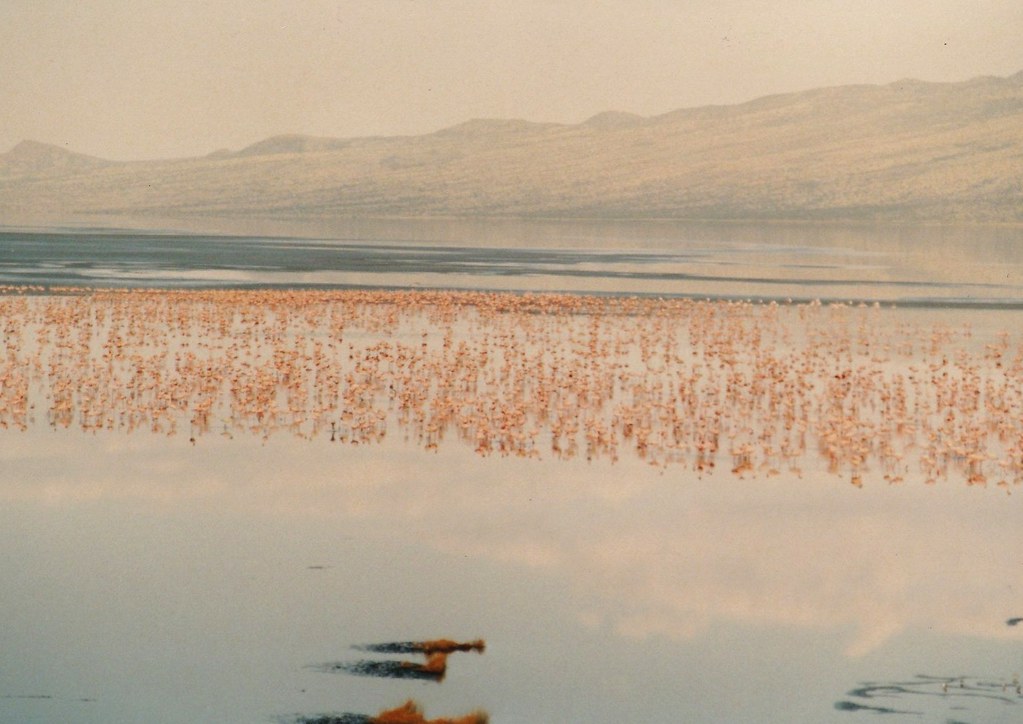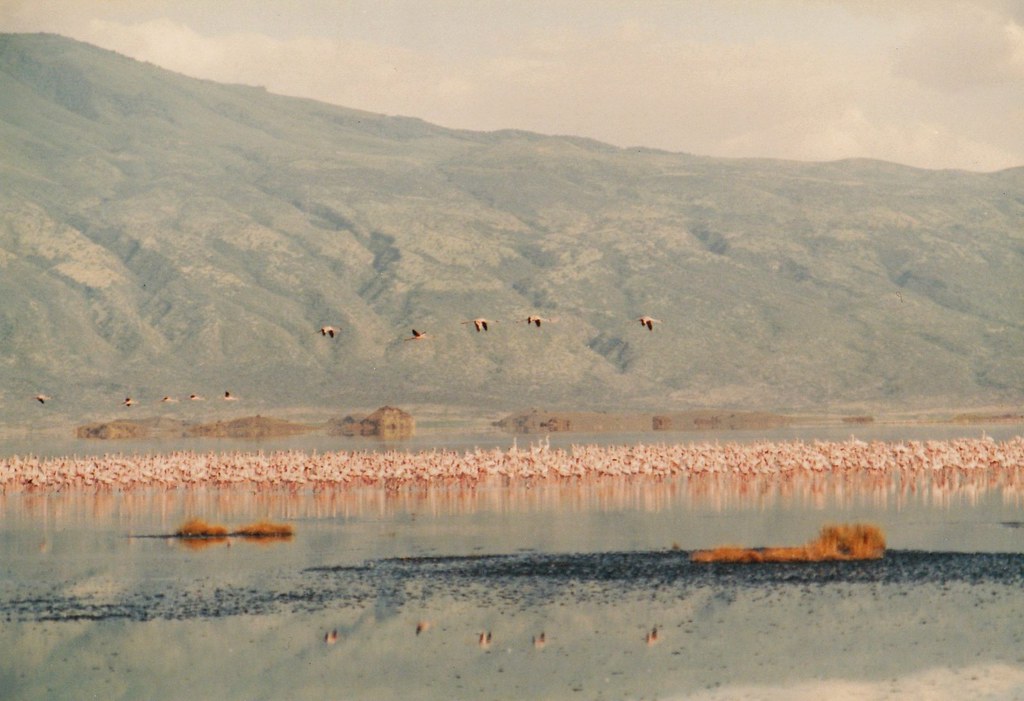
These flamingos, gather along nearby saline lakes to feed on blue-green algae with red pigments, called “spirulina”. Who’s status is close to “near-threatened” on the ICUN Red List. It’s a regular breeding area of 2.5 million flamingos. The gathering is one of nature’s fantastic spectacles.

Every year countless lesser flamingos have flocked to Tanzania’s Lake Natron to start nesting, but this mainly depends on the combination of environmental factors. Three-quarters of the world population of lesser flamingos (Hoenicopterus minor) live in East Africa and use Lake Natron as their nesting site. The birds take advantage of the lake’s extreme conditions, which keep their predators at bay, and more than 2.5 million lesser flamingos flock there during the breeding season. Sometimes, Lake Natron temperature crosses 60 ☌ making life difficult for animals and birds. Lake Natron is home to some endemic algae, invertebrates, birds, and fish. There are a variety of plants surrounding the lake get that benefit from salt marshes and freshwater wetlands. The alkali salt crust on the surface of the lake is also every so often colored red or pink by the salt-loving microorganisms that live there. Moreover, the red accessory photosynthesizing pigment in the cyanobacteria yields the deep reds of the open water of the lake and the orange colors of the shallow parts of the lake. Therefore, halophile organisms include a few cyanobacteria that make their own food with photosynthesis as plants do. Due to high evaporation rates, the color of the lake is characteristic during the dry season, salinity levels rise at a certain point where the salt-loving microorganisms start to flourish. The Lake’s alkalinity reaches a pH of more than 12, making the surrounding bedrock composed of alkaline, sodium-dominated trachyte lavas that were laid down during the Pleistocene period. Natron Lake has high levels of evaporation left behind natron, and trona (sodium, carbonate, decahydrate, sesquicarbonate dehydrate). The Lake Natron is also the World Wildlife Fund East African halophytics ecoregion. Due to its exclusive biodiversity, Tanzania has named The Lake Natron Basin to the Ramsar List of Wetlands of International significance. The Natron Lake temperature is falling above 40 ☌ (104 ☏). The Lake Natron is quite shallow just 9.8 feet deep, 57 KM long, and 22 KM wide. The water level varies depending on its water. The Lake is mainly fed by Ewaso Ng’iro River, which rises in central Kenya, and by mineral-rich hot springs. It does not store any personal data.Lake Natron is a salt and soda lake in the Arusha Region of Northern Tanzania, close to Kenyan Border in Gregory Rift. The cookie is set by the GDPR Cookie Consent plugin and is used to store whether or not user has consented to the use of cookies. The cookie is used to store the user consent for the cookies in the category "Performance". This cookie is set by GDPR Cookie Consent plugin. The cookie is used to store the user consent for the cookies in the category "Other. The cookies is used to store the user consent for the cookies in the category "Necessary". The cookie is set by GDPR cookie consent to record the user consent for the cookies in the category "Functional". The cookie is used to store the user consent for the cookies in the category "Analytics". These cookies ensure basic functionalities and security features of the website, anonymously. Necessary cookies are absolutely essential for the website to function properly. So if you continued drinking the salty Lake Natron water, your body would make you pee more water than you drank. Together, they can combine to create sodium chloride or salt.

Lake Natron has high levels of sodium and chlorine. The lake is flooded with underground water that can be as hot as 60 ☌ (140 ☏). What would happen if you drink from Lake Natron? A top coat of resin was applied to ensure protection from moisture, and then the mummified body was placed in a coffin and sealed in a tomb. What do mummies get wrapped in?Īfter the flesh was dehydrated, the body was wrapped in layers upon layers of linen, between which priests placed amulets to aid the newly deceased in the afterlife. Each organ was protected by one of the Four Sons of Horus: Hapy (lungs), Imsety (liver), Duamutef (stomach), and Qebehsenuef (intestines).

And the more salty water you drank, the thirstier and more dehydrated you would become.Ĭanopic jars were made to contain the organs that were removed from the body in the process of mummification: the lungs, liver, intestines, and stomach. The corrosive water would continue burning your mouth, esophagus and stomach.


 0 kommentar(er)
0 kommentar(er)
